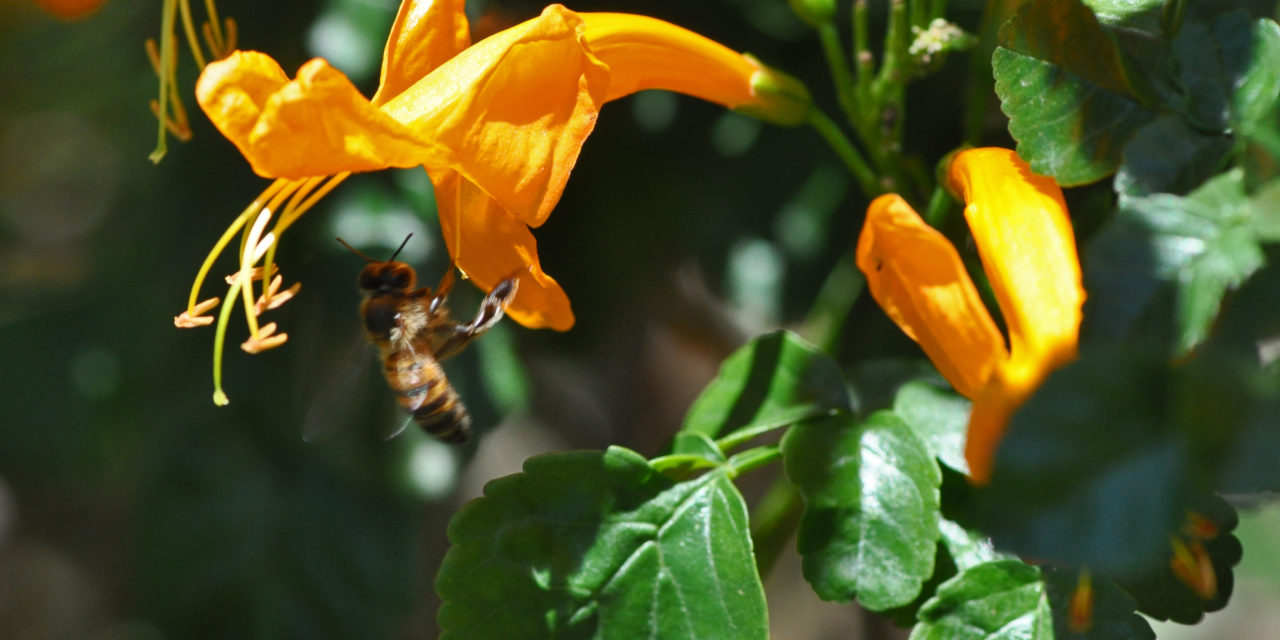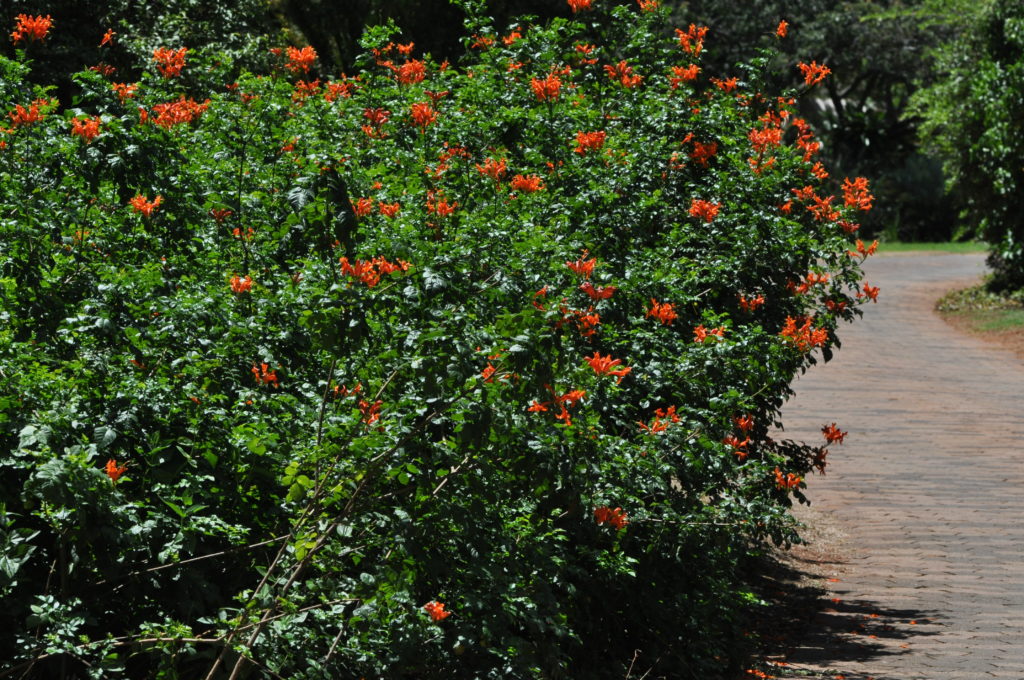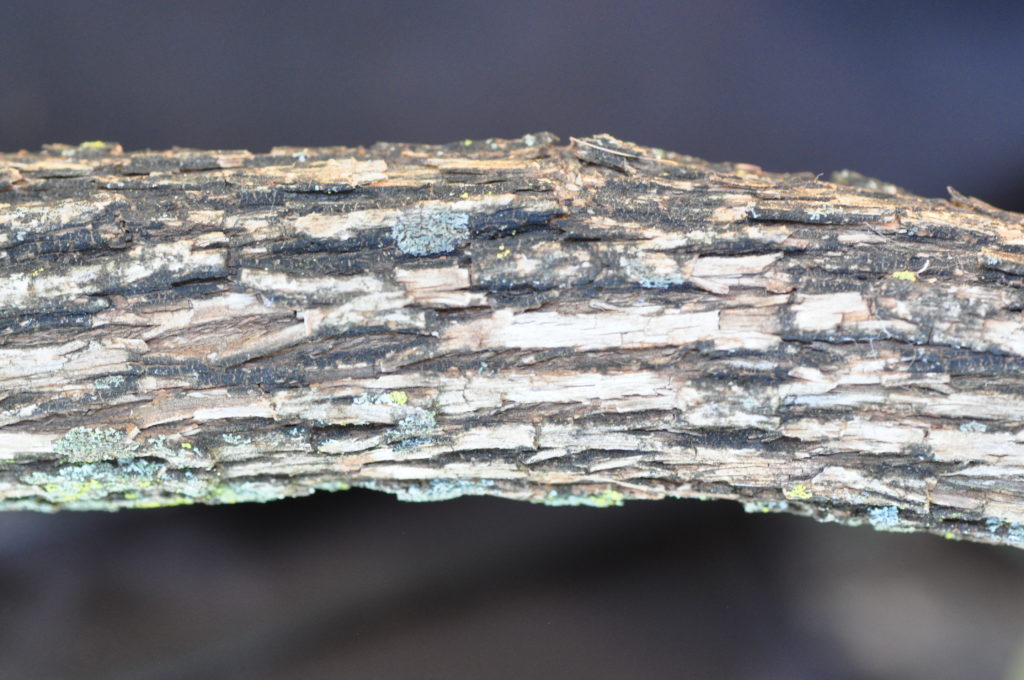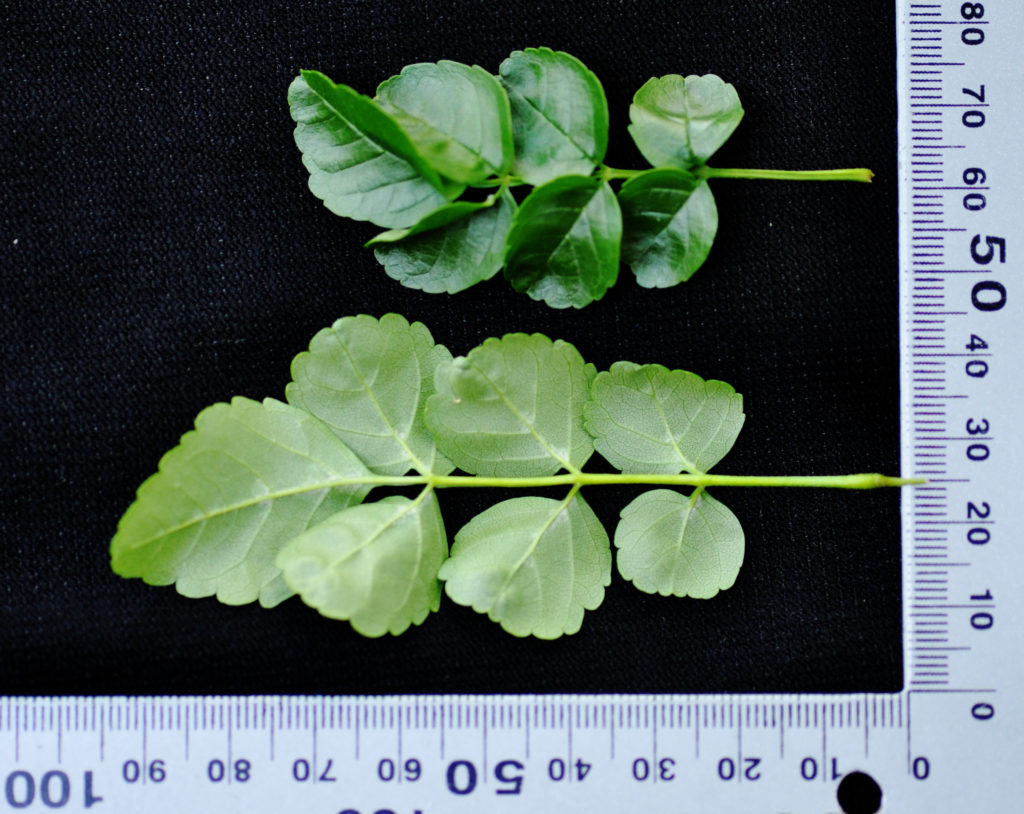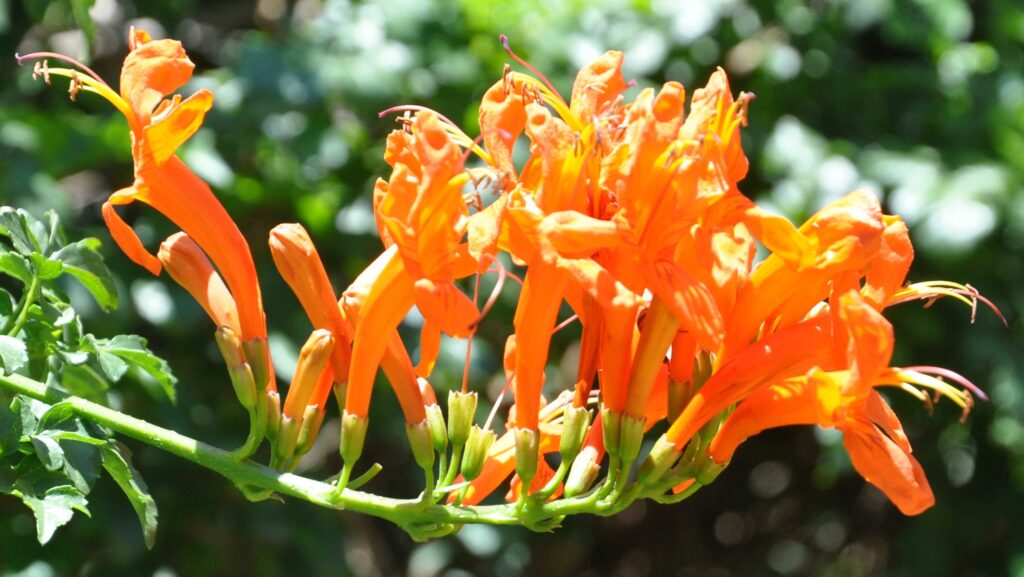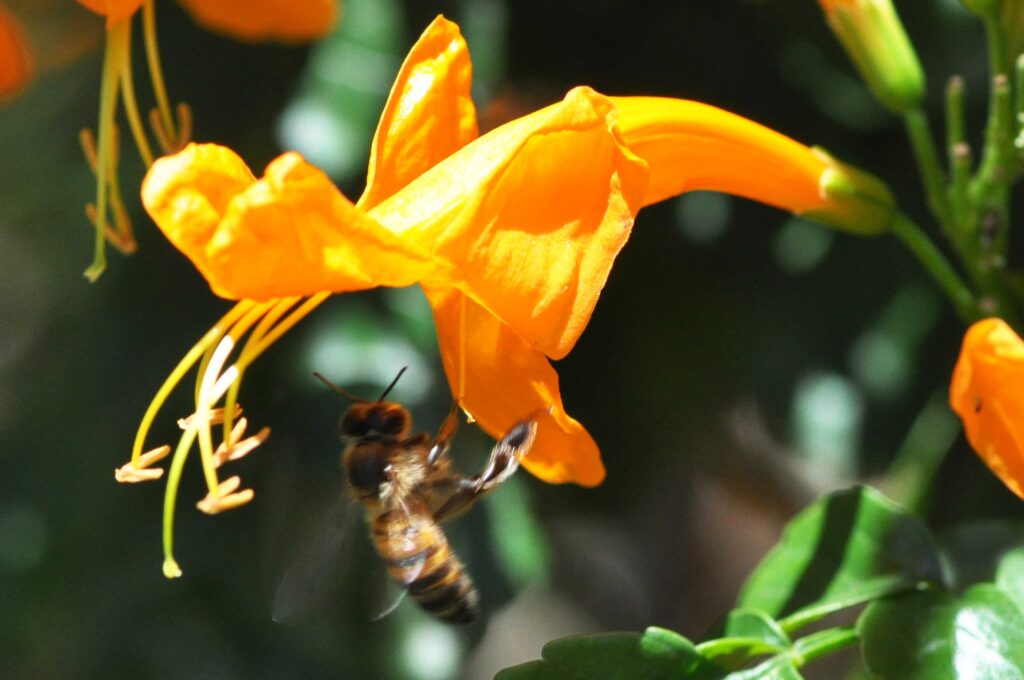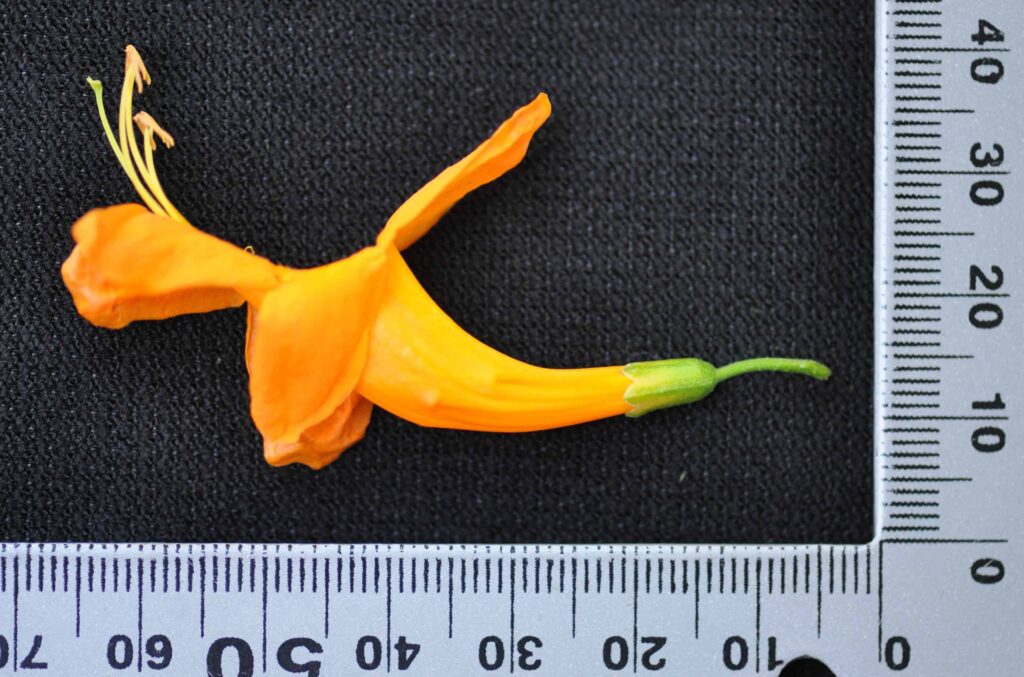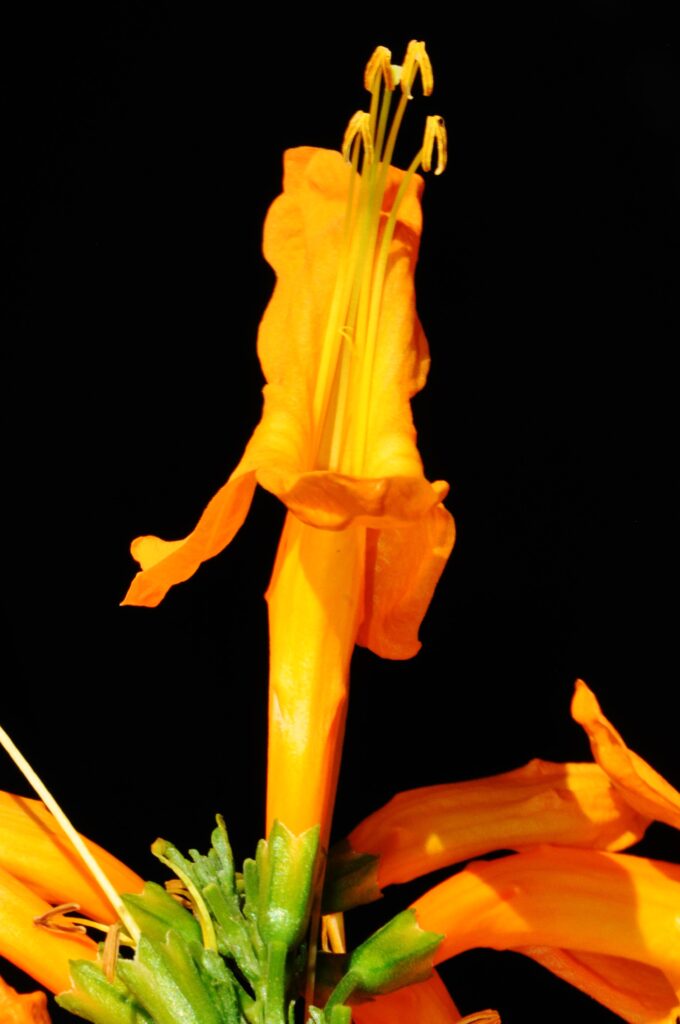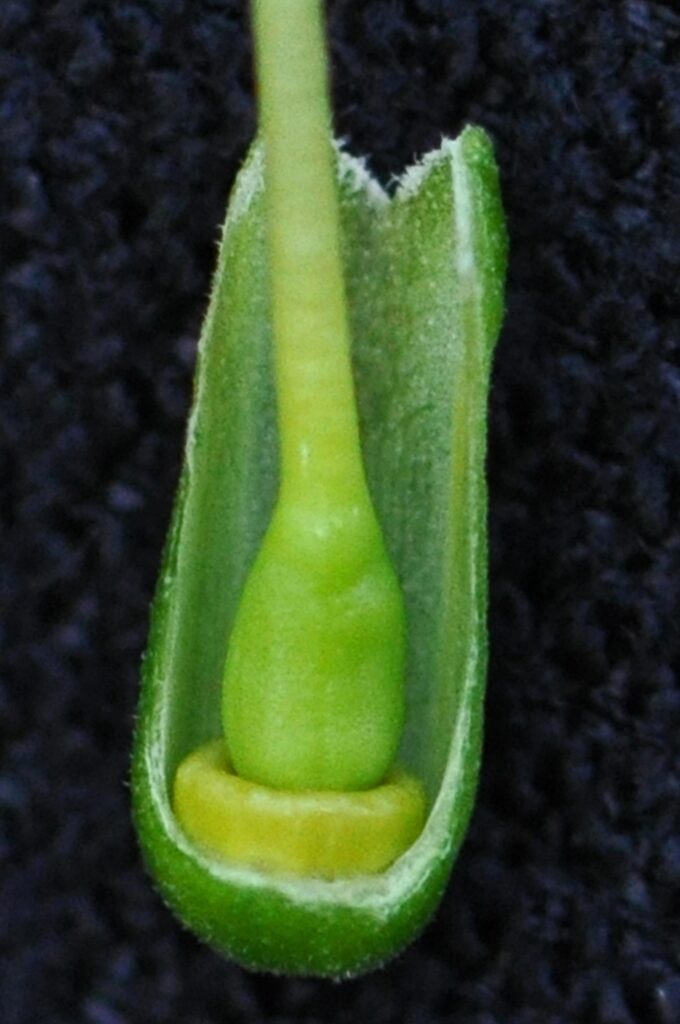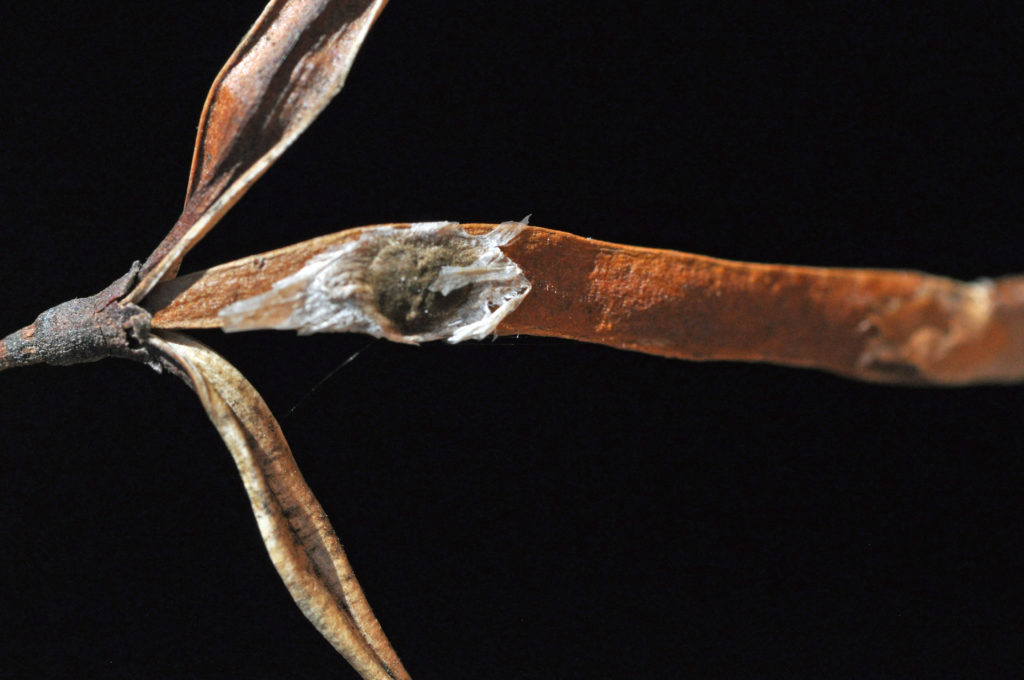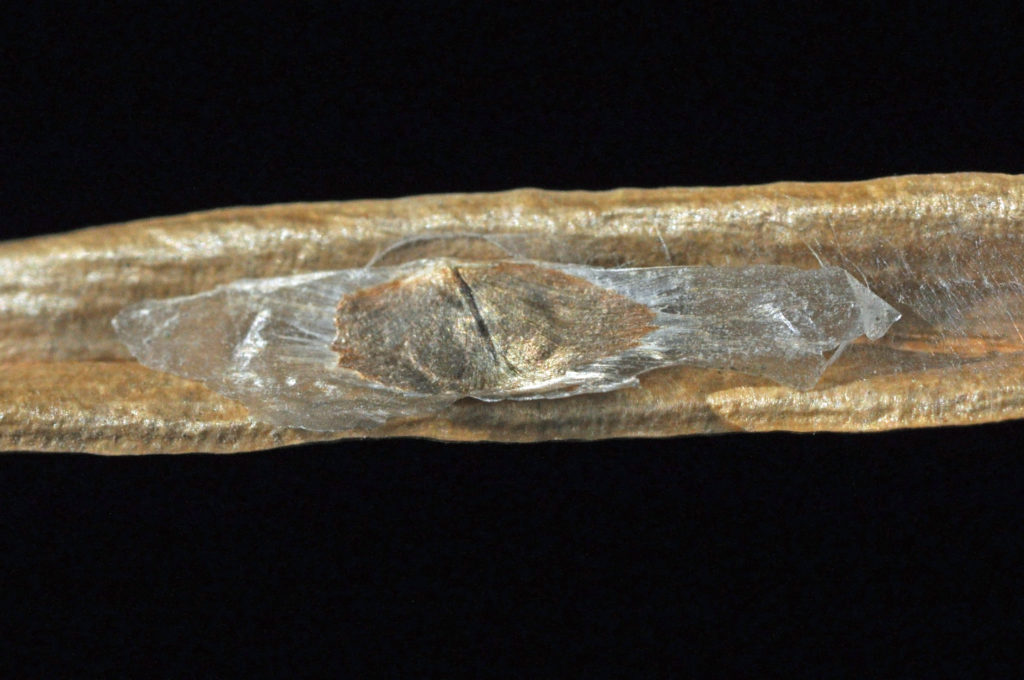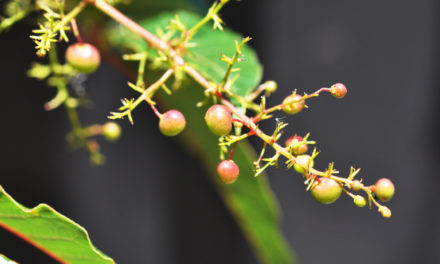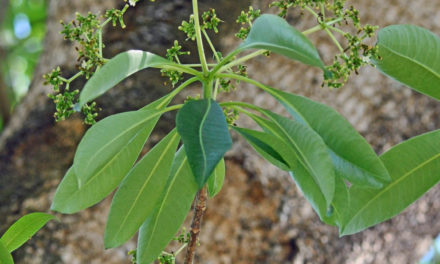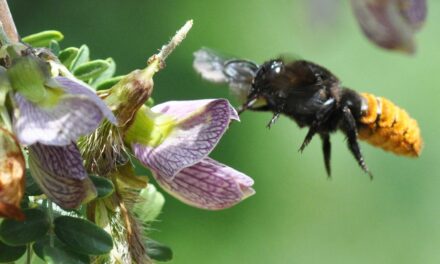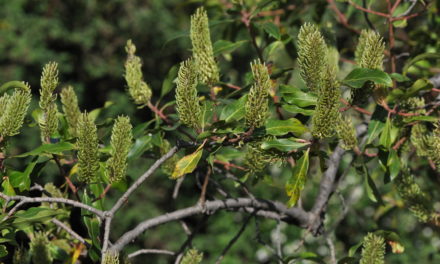General Info – summary
This garden asset is usually an unarmed shrub or a Tree up to 4m high. Imparipinnate, evergreen Leaves lack stipules and the paired leaflets increase in size towards the apex. Bisexual, zygomorphic Flowers are in racemes with 4 didynamous anthers and 1 staminode. The single pistil has a bilocular, superior ovary with a style with a bilobed stigma. Fruit is a dehiscent capsule releasing winged, wind-dispersed seeds.
Description
Tecomaria capensis subsp. capensis
Previous Names: Tecoma capensis, Bignonia capensis, Gelseminum capenses, Tecomaria krebsii, Tecomaria petersii.
SA Tree No. 673.1.
Common names: (Afr) Kaapse Kanferfoelie, Trompetters. (Eng) Cape honeysuckle, Honeysuckle, Tecoma, Tecomaria. (isiXhosa) Icakatha, idywadi, Umkoto, Umsilingi. (isiZulu) Imunyane, Incwincwi, Uchacha, Udodo, Ugcangca, Umunyane. (Northern Sotho) Morape-sitsane. (Setswana) Xunguxungu. (siSwati) Bopu, Idywadi, Ikakatha, Malangula, Malugana, Umkoto, Umsilingi, Malangula. (Tshivenda) Luvhengwa-mmbwa, Mapashile. (Xitsonga) Xunguxungu.
Family: Bignoniaceae: (Jacaranda family). There are about 104 genera and 810+ species. In South Africa, there are 6 genera + 2 naturalised with a total of 13 species. The indigenous genera with trees on this website include Bignonia, Kigelia, Markhamia, Rhigozum, and Tecomaria. Most species are woody. Leaves are usually compound, opposite and lack stipules. The usually large and brightly coloured Flowers are bisexual and irregular. They usually occur in panicles or racemes or are solitary. The Calyx has 5 partly united sepals which are shorter than the usually 5 joined Petals producing a conspicuous tube. The petals are often 2-lipped with the upper lip having 3 lobes and the lower lip with 2 lobes. There are usually 4 didynamous Stamens (2 long and 2 short) which arise from the corolla tube. A single staminode may be present. The Anthers have 2 pollen sacs which dehisce longitudinally. There is a superior Ovary with 2 united carpels. Many ovules are present. The simple Style terminates in a Stigma with 2 flattened lobes. The Fruit is usually a bivalved capsule. Seeds are usually flat and usually have a glassy, translucent wing.
Name derivation: Tecomaria from Tecoma – the Mexican name for a species of this genus. capensis – of the Cape. Subspecies capensis is the only one naturally occurring in South Africa.
Conservation: National Status: L C. (Least Concern). Assessed: 2005 (W. Foden and L. Potter).
Tree
This unarmed plant is usually a many stemmed scrambling shrub or rarely a Tree up to 4m+ high – with a similar spread. Young shoots have raised white to creamy, clearly visible Lenticels (usually raised corky oval or elongated area on the plant that allows the uncontrolled interchange of gases with the environment photo 250). In established stems, the Bark is pale brown, fissured lengthwise with dark grooves and lighter raised portions (photo 251). Bark does not flake off in round pieces.
- 838. 2018/02/12. Pretoria NBG. Photo: David Becking.
- 251. 2016/01/30. Linden. Photo: David Becking.
- 250. 2016/01/30. Linden. Photo: David Becking.
Leaves
Unless growing in very cold areas, the Cape Honeysuckle is evergreen. The opposite compound Leaves are thinly textured and imparipinnate (pinnately compound leaf ending in a single leaflet – photo 248). Each leaf is up to 13cm long and ends in the largest leaflet, which is single. Below this are 2-5 pairs of usually paired and oppositely arranged Leaflets. Leaflets pairs increase in size towards the apex. Almost hairless leaflets are up to 4 x 2,5cm (photo 248). They are round, oblong, ovate (egg shaped), obovate or elliptic, with the terminal leaflet being mainly ovate. The Apex usually tapers but may be acuminate (said of an acute apex whose sides are somewhat concave and taper to a protracted point) to rounded or even squarish. The Bases of the paired leaflets are asymmetric and taper or are rounded. The Margin is entire (with a continuous margin, not in any way indented) until nearly half way up the leaflet and from here, it becomes scalloped or toothed towards the apex. The leaf Blade is dark green, smooth above, and light green below (photo 248). The 4 to 8 pairs of lateral Veins are sunken above and more visible and protruding below. Domatia (Hair-tuft domatia – a tiny chamber produced by plants that house arthropods and, to the naked eye, they appear as small bumps) may be seen in vein axils. The Rachis (axis – in this case bearing leaflets) is grooved above (photo 248) and is slightly winged. The Petiole (leaf stalk) is up to 3cm (usually less) long and young petioles may be reddish and may be slightly winged. The Petiolules (leaflet stalks) are short or absent. Stipules (basal appendages of the petiole) are absent.
- 248. 2016/01/30. Home. Photo: David Becking.
Flowers
Flowering is most abundant after rain and flowers appear in terminal sprays. The bisexual Flowers are up to 6cm long (photo 246) and are Zygomorphic (floral parts unequal in size or form so that the flower is capable of division into essentially symmetrical halves by only one longitudinal plane passing through the axis). They are borne at branch ends in terminal sprays of up to 32cm long (photo 243). A short Pedicel (stalk of a single flower) attaches each flower to the stem (photo 243). In individual flowers, the short (5-9mm) Calyx is campanulate (shaped like a bell) and made up of 5 joined green Sepals (photo 246) forming a short tube at the base and each sepal lobe ends with a short tapering tip (photo 246). The curved Corolla is tubular, narrower at the base and trumped shaped. It is externally glabrous (hairless) and has some hairs within. The corolla widens at the mouth and is up to 5,5cm long and has 2 lobes. The upper lobe resembles a hood and the lowermost lobe is lip-like (photo 439). The vivid colours of these petals vary between orange (natural), red, scarlet and yellow. They strongly and attractively contrast with the leaves.
The Stamens are epipetalous (attached to the petals) and didynamous (having 4 stamens disposed in 2 pairs of 2 different lengths). These 4 fertile stamens protrude through the mouth of the corolla tube. Here the filaments end in Anthers that appear in an inverted V-shape (photo 432). A single, shorter posterior Staminode (sterile stamen) is also present (Photo 439 – in front of the bee). The fertile anthers have linear to oblong theca (pollen sacs). A swollen, squat Receptacle (that expanded tip of the flower stalk from which the floral parts develop and which is greatly expanded in the Compositae and Ficus). Here the receptacle is clearly visible below the ovary (photo 440). This single Pistil (a unit of the Gynoecium, the female element of the flower, composed of the Ovary, Style and Stigma) has a bilocular (2-chambered), superior Ovary (photo 440) containing several ovules. The Style ends in a bilobed (2-lobes), elliptic Stigma (photo 439). These terminal flowers are impressive against the dark green, shiny leaves. The stamens and style all extend beyond the petals (photo 439). (Mainly Jun-Nov – but most of the year).
- 243. 2016/01/30. Linden. Photo: David Becking.
- 439. 2016/01/31. Linden. Photo: David Becking.
- 246. 2016/01/30. Linden. Photo: David Becking.
- 432. 2016/01/3. Linden. Photo: David Becking.
- 440. 216/01/30. Linden. Photo: David Becking.
Fruit
The hanging, flattish and pointed Fruit is a Capsule (a dry fruit resulting from the maturing of a compound ovary – of more than one carpel – usually opening at maturity by one or more lines of dehiscence) which is narrow, pod-like, slightly curved and tapers to both ends. It is up to 13 x 1cm. The capsule dehisces releasing many seeds. The wind dispersed Seeds have 2 hyaline (having a glassy, translucent appearance), membranous wings (photos 55 and 311). Seeds lack endosperm (starch and oil containing tissues), are approximately rectangular and up to 3 x 1cm. (Oct-Feb).
- 55 2017.06.04 Linden. Photo: David Becking.
- 311 2018.06.23 Umngazi. Photo David Becking.
Distribution & Ecology
These drought and wind resistant plants occur along streams and in wet montane forests, forest margins, stream banks and wooded kloofs (steep-sided, wooded ravines or valleys). Altitude range is from sea level to 1 200m and plants are common on forest margins. They are found in in the Eastern Cape, KwaZulu-Natal, Mpumalanga, Northern Province, Limpopo, Swaziland, southern Mozambique, Malawi and northwards into tropical Africa. Sunbirds, bees and butterflies pollinate the Flowers. The larvae of the Death’s Head Hawk Moth with a roughly skull-shaped pattern on the thorax (Acherontia atropos) and the Fulvous Hawkmoth (Coelonia fulvinotata) feed on the Leaves. Bushbuck eats the leaves. Large quantities of sweet Nectar is produced which attracts bees and many birds, including sunbirds. The nectar is produced over a long period of time and only freezes somewhat below zero and thus is sought after on cold days – while it is still liquid. The small Streaky-headed Seed-eater (Critharga gularis) overcomes its inability to reach the nectar down the long corolla by removing it completely! The plant is tender to heavy frost.
Ethnobotany
The plant is easily grown from seeds, cuttings, or by layering (partially scratch the lower part to be buried then bend the young low down branch and cover with soil). This is a good, fast growing, bird tree which will benefit from pruning and the addition of a balanced fertilizer at the end of winter. Tecomaria capensis grows in full sun or partial shade. This plant has gained the Royal Horticultural Society’s garden award and has been on display at the Chelsea Flower Show. The plant has been used in erosion control. Children consume the nectar from extracted flowers. This is accomplished by pulling the petals out and sucking out the nectar (like the Streaky-headed Seedeater). Local medicine makes use of this plant – especially the bark and leaves. This plant is now cultivated in Hawaii, California, SE Asia and the Azores (in the Atlantic Ocean, a good deal to the west of Portugal). Tecomaria capensis flowered in 1827 after being planted at Kew gardens. (Kew gardens is near London and has the largest and most diverse botanical collection in the world. It is really worth a visit – at least a day!
References
Boon, R. 2010. Pooley’s Trees of eastern South Africa. Flora and Fauna Publications Trust, Durban.
Burrows, J.E., Burrows, S.M., Lotter, M.C. & Schmidt, E. 2018. Trees and Shrubs Mozambique. Publishing Print Matters (Pty) Ltd. Noordhoek, Cape Town.
Coates Palgrave, M. 2002. Keith Coates Palgrave Trees of Southern Africa, edn 3. Struik, Cape Town.
Foden, W. & Potter, L. 2005. Tecomaria capensis (Thunb.) Spach. National Assessment: Red List of South African Plants version 2020.1. Accessed on 2022/06/17.
Lawrence, G. H. M, 1951. Taxonomy of Vascular Plants. The Macmillan Company, New York. Tenth Printing 1965.
Palmer, E. & Pitman, N. 1972. Trees of southern Africa. Balkema, Amsterdam, Cape Town.
Schmidt, S. Lotter, M. & McCleland, W. 2002. Trees and Shrubs of Mpumalanga and the Kruger National Park. Jacana, Johannesburg.
van Wyk, B. & van Wyk, P. 1997 Field guide to Trees of Southern Africa. Struik, Cape Town.
http://plantzafrica.com/planttuv/tecomarcap.htm
https://en.wikipedia.org/wiki/Tecoma_capensis
http://ag.arizona.edu/pima/gardening/aridplants/Tecomaria_capensis.html
http://www.prota4u.org/protav8.asp?p=Tecomaria+capensis
http://posa.sanbi.org/flora/browse.php?src=SP
Tecomaria capensis | PlantZAfrica (sanbi.org)

